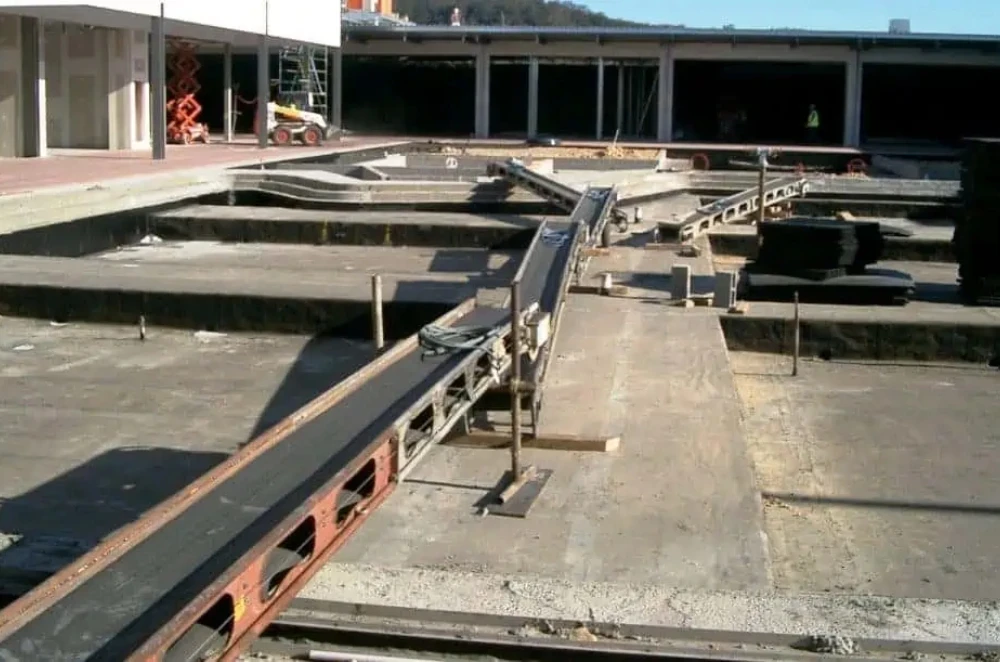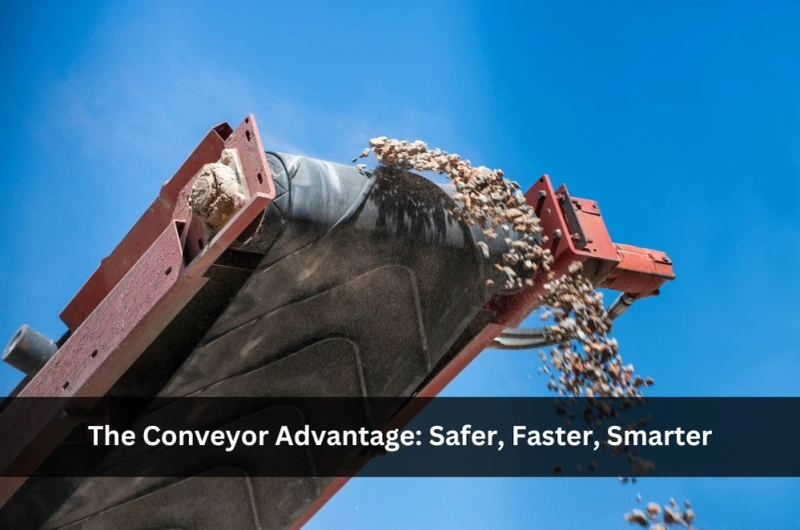Why can’t manual handling keep up anymore
Worksites have changed. Warehouses are busier. Labour is more expensive. And expectations around productivity and safety have never been higher. In today’s environment, relying on manual handling alone just doesn’t cut it — not when there are smarter options available.
That’s where a modern conveyor setup comes in. Whether you're running a workshop, a distribution centre, or a fabrication floor, investing in conveyors Sydney businesses can count on has become a critical step toward better efficiency.
I’ve worked with sites that delayed adopting conveyors for years, thinking their workflow was “too simple” to justify the cost. But after finally making the switch, they didn’t just improve movement — they saw better safety records, lower labour costs, and more accurate delivery turnarounds.
Let’s break down what makes conveyors the quiet hero of modern site operations.
How conveyors streamline your operation
A good conveyor system isn’t about bells and whistles — it’s about control. When you implement one correctly, you create a predictable, continuous flow of materials that replaces the unpredictability of people, forklifts, and trolleys.
Here’s what that looks like in real terms:
- No more bottlenecks between stations
- Fewer delays from manual tasks
- More consistent material handling
- Smaller teams handling more work
- Tighter floor plans with less wasted space
In one Sydney-based packaging facility I worked with, a single roller conveyor between the packing and sealing stations saved over three hours of walk time per shift. That’s over 750 hours a year — from just one change.
Safety: the often-overlooked benefit
Too many businesses think of conveyors purely as productivity tools, but one of their biggest advantages is actually risk reduction.
Manual handling remains one of the most common causes of workplace injuries in Australia. Back strains, slips, dropped loads, and repetitive movement injuries cost businesses millions every year. And that’s not counting the indirect costs — lost shifts, light duties, morale impact, or potential WorkCover claims.
Safe Work Australia provides guidance around manual handling and highlights the risks tied to lifting, pushing, and pulling — the exact tasks that conveyors can reduce or eliminate. Following their advice on the safe use of conveyors significantly lowers the chance of strain or overexertion.
The result? Safer staff. Fewer disruptions. A culture where safety is part of the flow, not an afterthought.
Which conveyor setup is right for your space?
Choosing the right setup starts with understanding your load type, space, and speed requirements.
Some common options include:
- Belt conveyors – Best for light products or continuous flow
- Gravity roller conveyors – No power needed; ideal for flat-bottomed loads
- Powered roller conveyors – Great for higher-speed environments
- Chain conveyors – Built for durability and bulk materials
- Flexible conveyors – Expandable for trucks, docks, or mobile layouts
You can also mix and match: for example, a belt conveyor feeding into a roller section, or a chain drive leading to a manual pick station.
If you’re still unsure, check out this internal guide on the benefits of using conveyors.
Real story: conveyor ROI in months, not years
One of our clients — a plumbing supply warehouse — relied on pallet jacks and forklifts to move boxed fixtures from delivery to dispatch. They weren’t inefficient, but they weren’t keeping up either.
We helped them install a modular conveyor line with two height-adjustable transfer points. After three months, not only had they cut dispatch time in half, but their forklift was freed up for more complex jobs, meaning fewer wait times and better task flow.
Their biggest win? A reduction in soft tissue injuries was reported by the team. The conveyor paid for itself in under four months, and productivity continued rising long after that.
Justifying the cost: Is a conveyor really worth it?
This is the biggest mental hurdle for many businesses. The idea that conveyors are “expensive” or “only for big operations.”
But here’s the truth: most mid-tier conveyor systems cost less than the average workplace injury claim — and far less than a new forklift.
Here’s what a basic ROI case often looks like:
- Upfront cost: $3,500–$8,000 for a modular setup
- Labour time saved per day: ~2–4 hours
- Payback period: ~3–5 months on labour savings alone
- Ongoing benefits: Reduced fatigue, fewer errors, smoother shift handovers
Plus, because most systems are modular, you don’t need to overspend. Start with what you need — scale as your business grows.
I’ve personally seen operations in Sydney’s southwest reclaim up to 20% of shift time by replacing walk-and-carry systems with short conveyor runs. No forklift upgrades. No hiring. Just smart layout and movement.
Common mistakes to avoid
Even the best conveyor system won’t perform if it’s badly planned or poorly installed.
Watch out for:
- Ignoring incline/decline planning — Items will drift or roll back
- Overloading — Too much weight wears down belts and motors fast
- No staff training — Operators misuse the system or override safety features
- Buying cheap, Low-quality units can jam, misalign, or fail at the worst time
- Bad layout — Sharp corners, awkward transfers, or wasted linear metres
Get your supplier involved early — or at the very least, model the system on paper before committing. A 10-minute sketch can save you months of headaches.
Futureproofing your site with conveyors
One of the big advantages of modular conveyor systems is their scalability. You don’t have to build the full 20-metre system upfront. Start with what you need now, and expand as your needs grow.
To futureproof your investment:
- Choose brands with Australian support and spare parts
- Prioritise units with universal fittings or standardised widths
- Design with power access and e-stop cords in mind
- Leave space for curves, diverters, or pick arms if automation is in your future
- Document everything — layout plans, load ratings, inspection schedules
And keep an eye on trends in warehouse conveyor design tips — innovative layouts and modular upgrades are key to staying competitive.
Who should be considering conveyors right now?
If you're in any of the following industries and not using a conveyor system, now is the time:
- Ecommerce fulfilment
- Packaging and print
- Trades and materials supply
- Recycling and waste handling
- Manufacturing and assembly
- Construction staging yards
- Timber or tile distribution
- Small-scale workshops managing stock movement
Even solo operators and contractors can benefit, especially when shifting heavy gear or running high-volume jobs in tight timeframes.

Final thoughts
The real advantage of conveyors isn’t just about speed — it’s about control. You create a workflow that doesn’t rely on how fast someone walks or how many forklifts are free. You build consistency into your business from the ground up.
If you're based in NSW and looking for high-quality conveyors that Sydney suppliers actually use on real job sites, CHS is a smart place to start.
A smart conveyor setup doesn’t just move stock. It moves the needle for your entire operation.



